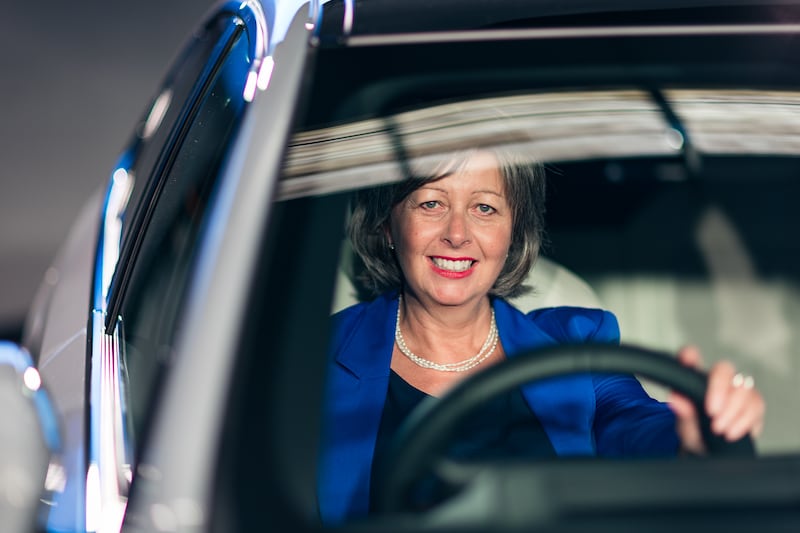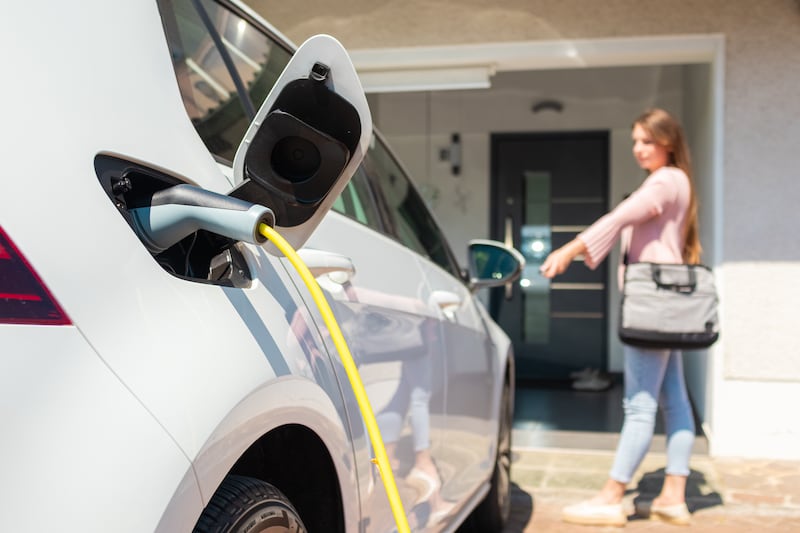However long the transition to electric cars takes, we all have to get used to some new phrases as well as some new habits. Instead of miles per gallon or litres per 100km, from now on we’ll all be concentrating on kWh/100km.
That is, of course, kilowatt hours per 100km, and it’s the headline unit of how quickly an electric car will burn though the energy stored in its battery. For anyone wondering, right now 15-18kWh/100km is generally considered to be decently efficient in day-to-day use for a medium-sized car. Consider that your equivalent of 40mpg.
When it comes time to top that battery back up, there are some more things to get used to. For a start, unlike filling up with fuel, you’ll have some choice about how to do it. Electric cars, right now, charge from two possible power sources – AC (alternating current, the same as you’ll find in your own house) and DC (direct current, for higher-speed, more powerful, industrial-spec charging).
In Ireland and Europe, that means using one of two different connectors. AC power generally runs at three different speeds – 3.4kW (roughly what you’d get from a domestic socket), 7.4kW (from a home charging point or a low-speed public charger), 11kW (a more powerful home or public charger) or 22kW (generally reserved for public charging). To work out how long it will take to charge your battery, you simply divide the kWh capacity of your battery by the kW speed of the charger – so, a 77kWh battery, from flat, will take slightly more than 10 hours on a 7.4kW home charging point.
READ MORE
In theory you can charge the battery of an EV from a domestic three-pin socket, but this will be slow and there are some safety issues. Make sure that the charging cable isn’t coiled up on itself, as then it can’t dissipate heat properly and you could end up with a fried socket. Equally, never use an extension cable if charging from a domestic socket.

AC charging uses what’s called a Type 2 cable, which is the one that’s coiled up in the boot (or the “frunk”) of your EV. It has a single socket, rounded with a flat top. You have to plug one end into the car (the end with the larger plug) and the other into the charger (the one with the smaller plug).
“Charging at home is often the most convenient and cost-effective solution,” says Helen Westby, managing director at BMW Group Ireland.
“You can charge overnight, take advantage of offpeak electricity rates and avoid relying on public stations. For BMW and Mini drivers, our retail network offers preferred suppliers for home charging, a reliable and convenient option for customers at the point of purchase. It is important to remind customers that a ‘Home Charger Grant’ for up to €300 towards installation of a smart charger is available.”
DC or fast charging uses a standardised socket with a double-decker-like arrangement. Essentially it looks like the Type 2 connector but with two additional round sections at the bottom. This type of connector is usually “tethered” – the cable is permanently attached to the charging point and you just plug one end into your car. DC charging speeds generally start at 50kW (although some are as low as 34kW) and run all the way up to 350kW and beyond. It’s good practice to use a DC charger to only charge to 80 per cent capacity, to protect the longevity of your battery.
[ Which electric car battery is best? EV battery types explainedOpens in new window ]
“Understanding charging options and how to maximise their efficiency is key,” says Gaspar Alcaide, brand director of Cupra in Ireland. “Each charging solution has unique benefits, depending on where you are – home, work, or public – and how much time you have.
“Installing a home charger, for those who can, is the most practical and economical way for EV owners to recharge, especially overnight when electricity rates are typically lower. It’s the most convenient and cost effective. Workplace Charging, where available, is super convenient for top-ups during the day and often free or at a subsidised rate.”

One current complication is paying for or activating public charging. While the EU has mandated that all charging points should facilitate contactless payment from a credit or debit card, some older chargers don’t have this function, and so you still – for now – need to have a variety of charging apps on your phone and RFID cards in your wallet.
Public charging is also very expensive – ESB’s cheapest public charging rate, without paying a monthly subscription fee, is 49c per kWh, which means a full 77kWh battery charge will cost you €37. It’s just one of the reasons (convenience being the other) that having a home charging point is such an important step on the electric car ownership trail. Not only does it mean that you can start each morning with a full battery if you need to, it also means that full battery might only cost you half or even a quarter of the cost of public charging, depending on your electricity supply tariff.
Of course, that rather leaves people who don’t have driveways, or who live in apartment blocks, either out in the cold or with a more difficult route to convenient charging, but that is one of the big EV challenges we must tackle in the coming years.














